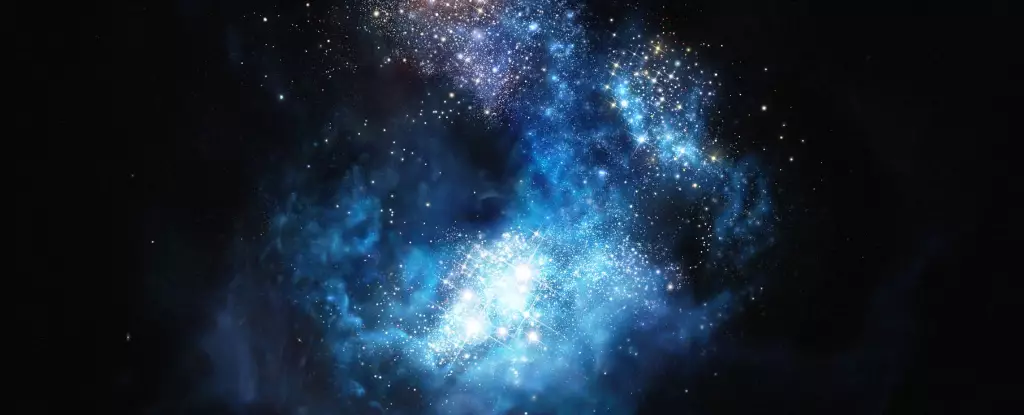Water holds an unparalleled significance in the webs of life that intertwine on Earth. As the foundational element of biological systems, it is paramount to consider how its presence is not merely a coincidence but rather a cosmic narrative embedded in the very fabric of the universe. Recent research gaze into the depths of stellar evolution reveals an intricate relationship between water formation and the life cycle of the first stars, offering insights that could redefine our understanding of life’s genesis.
The Universal Abundance of Water
Water, comprising one oxygen atom and two hydrogen atoms, is a simple compound yet a complex marvel. Its significance stretches beyond terrestrial life; it constitutes a major molecular component of the cosmos. The abundant existence of water in the universe contrasts sharply with earlier assumptions that water’s availability is a product of evolutionary time. The origins of hydrogen—the most abundant element in the universe—date back to the Big Bang, while oxygen, essential for water formation, emerged in the fiery cores of massive stars through nuclear fusion processes.
Historically, the belief has been that water became more common over cosmic timescales, as stellar evolutions contributed to the abundance of oxygen. Older stellar generations created environments that favored the formation of water molecules through the synthesis of heavier elements. However, emerging studies challenge this gradualistic perspective by suggesting that significant quantities of water formed earlier than previously believed, dovetailing with the lifecycle of stars from the universe’s infancy.
The Stellar Generations and Water Creation
Astronomers classify stars into distinct populations (Population I, II, and III) based on their age and metallic content. The eldest of these, Population III stars, give us profound insights into the early universe. These stars were entirely composed of hydrogen and helium, marking them as the original progenitors of cosmic material. Though never directly observed, theoretical models propose that they existed in enormous sizes and ephemeral lives.
It is fascinating to ponder that these ancient stars set the stage for an elemental evolution, providing the groundwork for future stellar and planetary formations. Current research posits that the demise of these stellar giants sparked a series of reactions that led to the proliferation of water in the cosmos. By utilizing simulations of both small and large early stars, scientists revealed that upon their death—through mechanisms such as supernova explosions—these stellar remnants dispersed an unprecedented abundance of water throughout their surroundings, enriching the molecular clouds that would, in time, act as the cradle for new stars and, potentially, life.
Analysis of these early star explosions indicates that molecular clouds shaped from their remnants contained 10 to 30 times more water than the diffuse clouds observed within the Milky Way today. This substantial influx of water laid the groundwork for the early chemical reactions necessary for the formation of organic molecules. The implications are monumental; they suggest that as early as 100 to 200 million years post-Big Bang, an adequate amount of water coexisted alongside other critical elements, potentially making conditions ripe for the emergence of life.
Yet, intriguing complexities arise when considering the dynamic environment of the early universe. While water may have emerged in considerable amounts, various astrophysical processes—including ionization—could have fragmented these molecules, leading to fluctuating water availability. The period following the birth of Population III and II stars likely witnessed a dichotomy: a brief flourishing of water followed by a dry epoch, which ultimately shaped the trajectory of cosmic evolution.
The ongoing discourse around celestial water not only ignites curiosity regarding life’s origin but also deepens our appreciation of our connection to the universe. The very molecules that are foundational to life on Earth may stem from the remnants of ancient stars long extinguished. By exploring this relationship, we punctuate a profound narrative interwoven into the cosmos: the transformation of starlight and elemental death into droplets of water—the essence of life.
As we further investigate the cosmic contributions of early stellar generations, we draw closer to answering one of humanity’s most pressing questions: Are we alone in the universe? The river of time flows toward potential answers, shaped by the stars that shone brightly in an era both distant and formative. The legacy of water is a testament to the intricate dance between life and the cosmos, reminding us that our existence is mirrored in the stellar realms above.


Leave a Reply